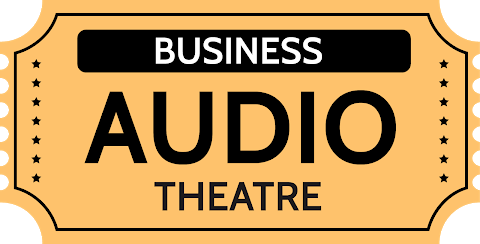“There is value in a story that is, designed to drive the simulation and to elicit the [employee’s] best performance”- Society for Human Resource Management
“Story-telling is an important element… involving the sharing of experiences and creation of mental-maps of the environment in which people are motivated to perform to their full potential”- Leadership and Organization Development Journal
“Audio narrative has recently benefited from profound cultural shifts in media consumption associated with on-demand television’s binge watching revolution and the advent of digital longform storytelling”- Journal of Radio & Audio Media
“Storytelling that integrates a moral and spiritual component can transform an organizational culture so members of the organization begin to feel connected to a larger community and a higher purpose”- Journal of Business Ethics
“Millennials are more technologically advanced than any previous generation [and] survey data has shown a correlation between age and reading preferences [where] younger people listen to more audiobooks than older Americans”- State University of New York
“Maximizing success through onboarding by storytelling during orientations, [helps employees understand] the company's culture and values [and] its goals and history”- Society for Human Resource Management
“The storytelling process yields positive impacts on internal and external stakeholder outcomes including increasing employees’ thriving and meaningful work, as well as the attitudes and trust of multiple external stakeholders”- Journal of Strategic Marketing
“There are currently about 1000% more titles published since 2011”- Audio Publishers Association
“The corporate world cannot ignore the demands and expectations of Millennials, who are devout in their desire to associate with companies aligned with their values”- Center for Social Impact Communication at Georgetown University
“Audiobooks have had a big shift in popularity in 2018 where for the first time, “a full half of all Americans ages 12 and older have listened to an audiobook, up from 44% last year”- Forbes
“Employees have a deeper affiliation with the message through organizational storytelling due to aligning stories with their own experiences and understanding”- International Journal of Business and Social Science
“Narrative presentation of corporate strategy, comparative advantage, is more effective at producing a consistent and confident choice of competitive advantage among an audience than a presentation of corporate strategy using a PowerPoint style, bulleted list approach”- Journal of Strategy and Management
“Audio platform superiority was about the desire to use an audio platform that is perceived to be superior to other audio alternatives, including on-demand convenience (time and place) and content (vari- ety and uniqueness)”- New Media and Society Journal
“Storytelling is essential to successful branding, since your brand is the sum of all your corporate behaviors and communications that inform your customers’ experiences with your product or company”- The Journal of Business Strategy
“A poor cultural fit is frequently cited as one of the main reasons [an employee] decides to leave an organization… defining the organization's culture through storytelling should start with branding of the organization and continue through the interview and onboarding process”- Physician Executive Communication Journal
“The most recent era in audio entertainment… users are asserting power over the medium to select particular content at particular times”- Mass Communication and Society Journal
“64% of Millennials consider a company’s social commitments when taking jobs and will not work for a company if they do not have strong corporate social responsibility (CSR) values”- Cone Communications
“Brands can bring their CSR (corporate social responsibility) efforts to life through authentic storytelling [and] Millennials want to know what companies are doing to make the world a better place”- Center for Social Impact Communication at Georgetown University
“116% growth in spoken word listeners 13-34 years old in the past even years, with 18% growth in the last year”- National Public Radio Organization
“The audiobook market share shifted from 42% digital copy sales in 2009 to 87% digital copy sales in 2017”- Audio Publishers Association
“When it comes to digital storytelling for branding, there is, a more positive attitude towards the company when the employer branding message is using digital storytelling”- Management Dynamic in the Knowledge Economy Journal
“Over 71 thousand audiobook titles (were) published in 2020, a 39% growth between previous years”- Statista
“Spoken word audio listening is up 40% in the past seven years, and up 8% year over year”- National Public Radio Organization and Edison Research
“Researchers have shown that storytelling strengthens the connections consumers have to brands, so that to a great extent what a brand means to a consumer is based . . . on the narratives he or she has constructed that incorporate the brand.”- Journal of Business Strategy
“[the way employees are on-boarded] sets the tone for the culture of a place, the people, and the values of a new institution and can have a significant impact on employees’ sense of belonging”- Journal of Research, Assessment, and Practice in Higher Education
“[onboarding] can also aid employees in identifying values congruence which is critical to career contentment and commitment which can significantly impact retention to both the field and the institution long-term” - Journal of Research, Assessment, and Practice in Higher Education
“Corporate storytelling is suggested to help demonstrate the importance of the corporate brand to internal and external stakeholders… as well as help a firm to bond with its employees”- Product & Brand Management
“The majority (79%) of Millennials want to work for a company that cares about how it contributes to society and 69% would refuse to work for a company that is not socially responsible”- Journal of Education For Business
“Stories are a device… [that] provide managers with a form of social and intersubjective interaction that reflects belief systems, role expectations, interpersonal norms and conditions for work behavior”- International Journal of Management
“A focus on social responsibility is particularly important to attract, retain, and increase the commitment and engagement of Millennial employees and talented women”- Center for Creative Leadership
“Employees have a deeper affiliation with the message through organizational storytelling due to aligning stories with their own experiences and understanding”- International Journal of Business and Social Science
“Storytelling that starts with the persona allows us to tap into these deeper recesses, where the influence of attitudes and emotions is greater… loyalty and trust are found there”- Journal of Business Strategy
“73% of the U.S. 12+ population (an estimated 209 million people) have listened to online audio in the last month, up from 68% in 2021”- Edison Research
“Audiobook sales revenue has been on a steep rise since 2018, reaching 1.3 billion USD in 2020”- Statista
“Online audio (podcasts, radio shows, music and audiobooks) has become more popular than ever before”- Publishing Research Quarterly
“As technology evolves, people have more options available to them, which may explain why [reports] found younger adults to be more likely to opt for audiobooks and the multi-tasking they enable”- Forbes
“83% of Millennials would be more loyal to a company that allows them to contribute to social and environmental issues”- Cone Communications
“Three uses for storytelling in organizations: (1) to motivate employees, (2) for education and (3) to consolidate corporate culture”- Journal of Marketing
“Should produce positive effects on key audiences, such as increasingly positive attitudes toward the company and eventually behavioral intentions to support this company”- Public Relations Review
“19% [of Millennials] say they have paid in the last year for a subscription service for eBooks or audiobooks such as Kindle Unlimited or Audible”- American Press Institute
- watch
 play_arrow
play_arrowOne-Minute Explainer Video Business Audio Theatre 1:09
- watch
 play_arrow
play_arrowBirth of the Foot
02:09 - watch
 play_arrow
play_arrowThunderstorm
03:50 - watch
 play_arrow
play_arrowParty Scene
01:42 - watch
 play_arrow
play_arrowThe No Game
01:02 - watch
 play_arrow
play_arrowBuyer Part 1
02:05 - watch
 play_arrow
play_arrowBuyer Part 2
02:02 - watch
 play_arrow
play_arrowMichael Houlihan & Bonnie Harvey – The Barefoot Spirit (Audiobook) C-Suite Network 19:21
A Transformative Idea: “Business Audio Theatre” From The Founders Of Barefoot Wine. Not Just Narrated … Performed!
 Forbes September 14, 2020 103
Forbes September 14, 2020 103

Over the years, I’ve written about, interviewed, and listened to Michael Houlihan and Bonnie Harvey, the founders of Barefoot Wine and New York Times bestselling authors of The Barefoot Spirit: How Hardship, Hustle, and Heart Built America’s #1 Wine Brand.

Barefoot Wine Founders Bonnie Harvey and Michael Houlihan
JOSEPH SOHM
Recently their latest project caught my eye, or should I say, my ear. Welcome to the world of Business Audio Theatre, where business audiobooks are not just narrated but performed! Last week I caught up with the dynamic duo at their California Wine Country home. I wanted to know more.
Robert Reiss: You guys built and sold what is now the world’s #1 wine brand. Wasn’t that enough?
Michael Houlihan: After we sold Barefoot Wine, our employees, vendors and buyers kept encouraging us to write a book about the unique principles we used to succeed. And we really wanted to share our hard-earned lessons with others so they would succeed faster. Our first attempt was like most business books, you know, the three things you’ve got to do, the five things never to do, and the 25 things your customer wants from you. We hated it. We threw the entire manuscript right in the garbage. Then we met Rick Kushman, who wrote down the various true stories that demonstrated those principles in a much more entertaining fashion. The Barefoot Spirit paperback was the result, and it has been used in over 60 schools that teach entrepreneurship. After about four years speaking, we noticed that our audiences where coming in with ear buds. We asked several what they were listening to. Was it hip-hop? Was it rap? No, they were listening to podcasts and business audiobooks. We thought, “Of course! It’s mobile and it’s multi-tasking friendly.” We wanted to get our message across to this new mobile generation. We started listening to business audiobooks, but most were simply narrated, and this left us underwhelmed. Like Barefoot Wine, we wanted our business audiobook to be fun and engaging.
Reiss: How you are improving the way we can listen to business audiobooks?
Houlihan: Most business audiobooks are simply narrated either by the authors, narrators or celebrities. This can create a single-dimensional and somewhat boring experience. We wanted to take the customer experience to the next level by adding color, fun and entertainment. So, we took our own story, The Barefoot Spirit, and adapted it to an audio play, complete with Hollywood actors, sound effects, and an original music score. It’s a true “3-D audio” experience. We call this new audiobook format Business Audio Theatre.
Reiss: What are the advantages of Business Audio Theatre over narration?
Houlihan: We believe the best way to convey business principles is through story, and the best way to convey story is through theatrical performance. You are not just hearing the story, you are there, experiencing it. You identify with the characters and are entertained by the action, dialogue, sound effects and music. It brings the story to life! We like the audio theater format because, unlike text and video, you are not immobilized. Audio Theatre creates a movie in your mind where you participate in the storytelling by curating images of scenes, props and characters from your own imagination and memory. It’s a form of experiential learning.
Reiss: Your talks are a lot about the customer experience. Who are the customers for Business Audio Theatre?
Houlihan: The BAT customer may be an aspiring entrepreneur or may already be building a business. The listener may be a new employee who is being onboarded by a company using this format as a training tool to preserve and convey the founder’s legacy, story and principles. This can reduce turnover and increase engagement. And, all types of customers can enjoy this form of edutainment on demand and on the move.
Reiss: So, now that you have produced your own Business Audio Theatre audiobook, what can you tell us about the production process?
Houlihan: Our book was already written as a business bio, so it lent itself to this new format. But, to create a learning tool, the message must be in story form with scripts and scenes, action and outcomes. Once this is done, we can cast the characters, add sound effects and write the musical score. Obviously, length is a big factor. For instance, our audiobook is over seven hours long and is broken down into 10-, 25- to 45-minute episodes. Each episode, or chapter, is further broken down into several 30-second to 4-minute mini-story segments. We engage clients in comprehensive pre-production interviews to determine their intended use, desired length and existing intellectual assets. Then, our entertainment industry production partners can develop a timeline with milestones, not unlike making a movie – without the camera, of course. To find out more about Business Audio Theatre or to listen to a free chapter of The Barefoot Spirit, go to www.barefootaudiobook.com.
Copyright © 2020 Business Audio Theatre


